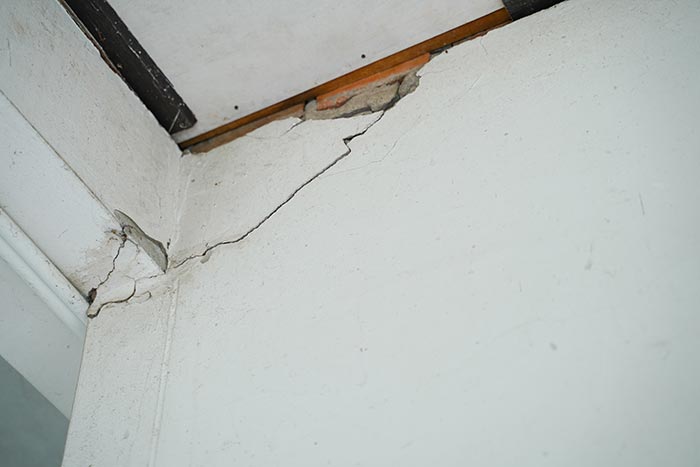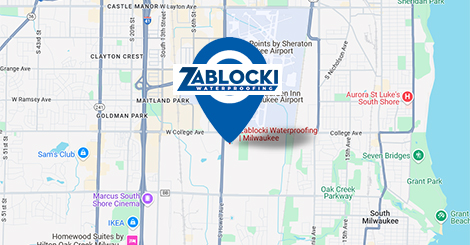The stability and longevity of a home significantly depend on the health of its foundation. However, many homeowners often overlook the warning signs of foundation damage until it’s too late. From wall cracks to uneven floors, these subtle indicators can rapidly escalate into severe problems, compromising the safety of your dwelling and those within it.
We will cover the complexities surrounding foundation damage in this article. We delve into the common signs of a deteriorating foundation, explore various repair methods, and finally, address the critical question – when is a foundation beyond repair?
Article Summary:
- Foundation Damage: Understanding the Basics
- Signs Your Foundation May Need Repair
- Common Causes of Foundation Damage
- Methods of Foundation Repair: From Mudjacking to Foam Jacking
- How Long Does Foundation Repair Take?
- When Is a Foundation Beyond Repair?
- Choosing the Right Repair Company
1. Foundation Damage: Understanding the Basics
The foundation provides the necessary support for your home to uphold its structure. However, it’s not immune to damage. Understanding the basics lies in recognizing that foundation damage often stems from a variety of factors. Soil conditions, age, poor construction, and water issues are among the most common culprits. Over time, these can lead to structural deformities like cracks, bowing walls, and uneven flooring.
More than just cosmetic issues, these signs often point to larger, underlying problems that can jeopardize the structural integrity of your home. By understanding the basics of foundation damage, you’ll be better prepared to identify potential warning signs early, possibly preventing minor issues from escalating into costly repairs or, worse, a foundation beyond repair.
2. Signs Your Foundation May Need Repair
Foundation damage can manifest in a variety of ways, and it’s not always easy to spot. Some signs may seem harmless at first glance but can escalate quickly into significant problems. Here are a few warning signs that your foundation may need repair:
- Cracks in Walls or Floors: Any form of cracking, whether on the interior or exterior walls or in the basement floor, can be a sign of foundation problems.
- Uneven or Sloping Floors: This could indicate that your foundation is settling or shifting.
- Doors and Windows that Stick or Don’t Open Properly: If doors or windows are hard to open or close, or they stick, it could be a sign of a shifting foundation.
- Bowing Walls: Walls that are bowing inward can signal serious foundation issues.
- Gaps around Window Frames or Exterior Doors: These gaps may suggest that the foundation has shifted.
- A Sinking or Settling Foundation: If one part of your home appears to be lower than the rest, it could mean that your foundation is sinking.
You can read more about foundation damage in our two-part series “Common Signs of Foundation Issue Part 1” & “Common Signs of Foundation Issues Part 2”
3. Common Causes of Foundation Damage
As mentioned earlier, several factors can contribute to foundation damage. Understanding these causes can help you take preventative measures and address issues quickly before they escalate. Some common causes include:
- Soil Issues: Expansive soils that swell when wet and shrink when dry can cause significant movement, leading to foundation damage.
- Poor Drainage: Excessive moisture from poor drainage can weaken the soil beneath the foundation, causing it to shift or sink.
- Tree Roots: Large tree roots can dehydrate the soil beneath a home, causing soil shrinkage and subsequent foundation movement.
- Plumbing Leaks: Under slab plumbing leaks can erode or disturb the soil, leading to foundation problems.
- Poor Construction: Inadequate foundation construction or using improper materials can lead to premature failure.
- Age of the Building: Older buildings are more likely to have foundation issues due to natural settlement over time.
4. Methods of Foundation Repair: From Mudjacking to Foam Jacking
When it comes to foundation repair, there are several methods available, with mudjacking and foam jacking being two of the most prevalent. Mudjacking, also called slabjacking or concrete lifting, is a traditional method of foundation repair that injects a mixture of soil, cement, and water underneath the foundation to help stabilize it.
Foam jacking, also referred to as polyjacking, uses high-density polyurethane foam for the same purpose. This method involves drilling holes in the concrete and filling them with the foam, which expands to lift the concrete and fill any voids underneath. It’s important to consult with a foundation repair expert to determine the most suitable approach for your property.
5. How Long Does Foundation Repair Take?
A question we get asked often is “how long does foundation repair take?” The duration of foundation repair can significantly vary depending on the severity of the damage and the method used for repair. Generally, foundation repair can take about two to three days. However, more complex structural jobs might take between 3 to 4 days, and in some cases, as long as two weeks. For minor repairs, such as filling cracks or sealing leaks, it may take only a few hours.
It’s important to note that these are just averages and the actual timeline can be affected by various factors including the size of the project, weather conditions, and contractor availability.
6. When Is a Foundation Beyond Repair?
While most foundation problems can be fixed, there are situations when a foundation may be considered beyond repair. This typically happens when the cost to fix the foundation exceeds the value of the home or when the structural integrity of the home is compromised to a point where it’s unsafe.
Signs that a foundation might be beyond repair include severe bowing or leaning walls, significant sinking or settlement that affects the overall stability of the house, and extensive structural damage from natural disasters. These conditions often require more than just repairs to the foundation; they may necessitate a complete rebuild of the structure.
7. Choosing the Right Repair Company
Foundation repair is a significant investment in your home, and it’s essential to choose the right contractor for the job. For expert Milwaukee foundation repair, trust the team at Zablocki Waterproofing.
Specializing in foundation repair, basement repair and basement waterproofing, our experienced professionals use advanced technology and techniques to accurately diagnose foundation issues and provide customized solutions that meet your specific needs. Contact us today for a free consultation and keep your home safe and stable for years to come.
 By Dale Granbois, co-owner of Zablocki Waterproofing
By Dale Granbois, co-owner of Zablocki Waterproofing
Dale Granbois is the proud co-owner of Zablocki Waterproofing, the premier basement waterproofing and foundation repair service provider in Milwaukee. Our team of experienced professionals offer a variety of services from complete basement waterproofing solutions to structural foundation repairs -all designed to keep your home or business safe and dry. Let us save you from expensive headaches caused by water damage and give you peace of mind with a safe and secure property. Contact us today for more information!







